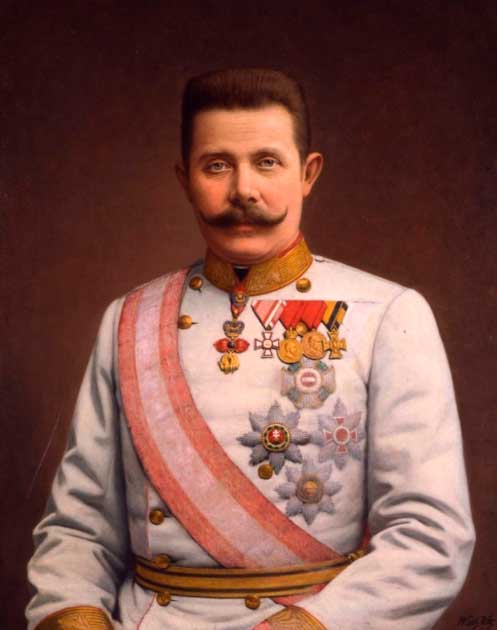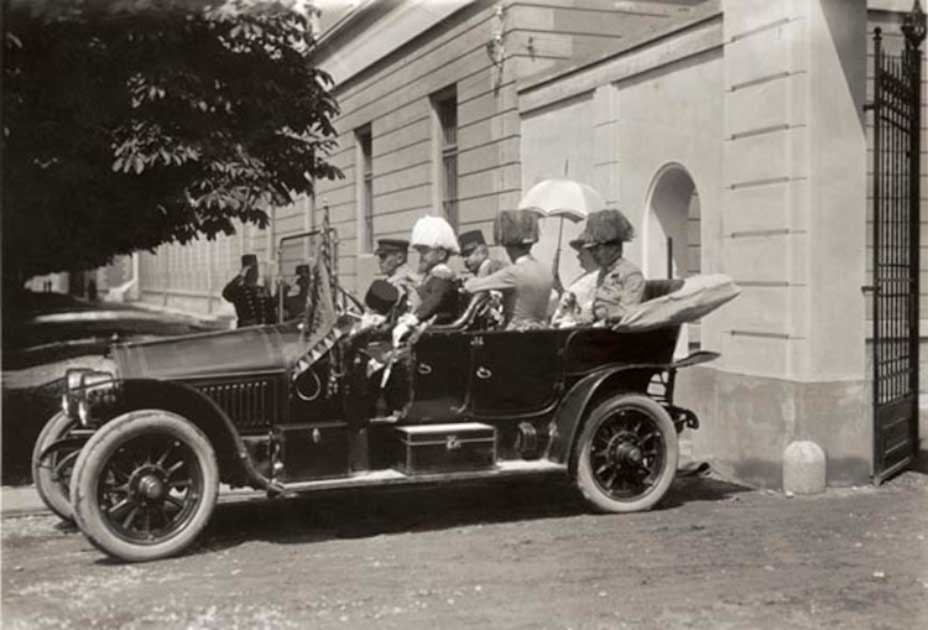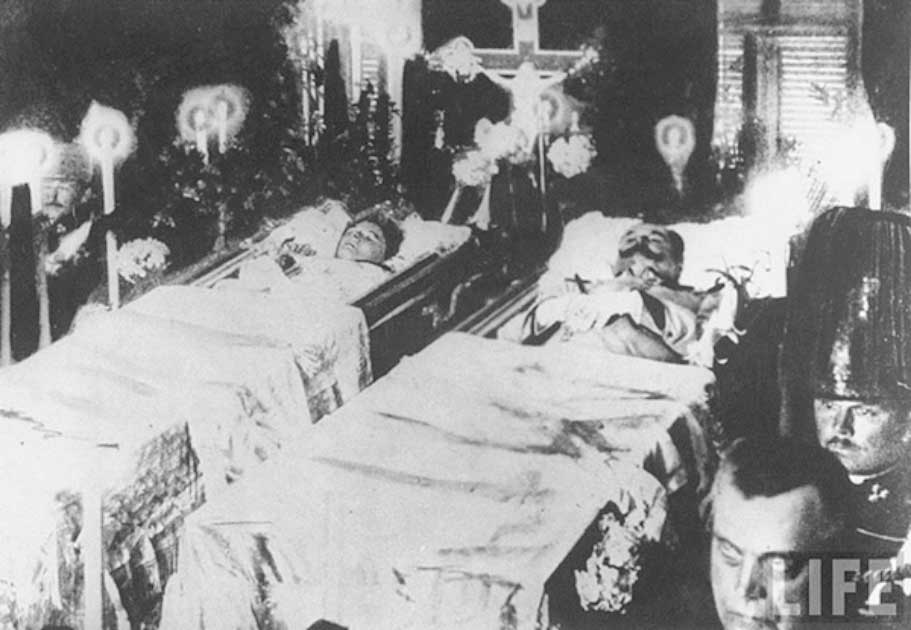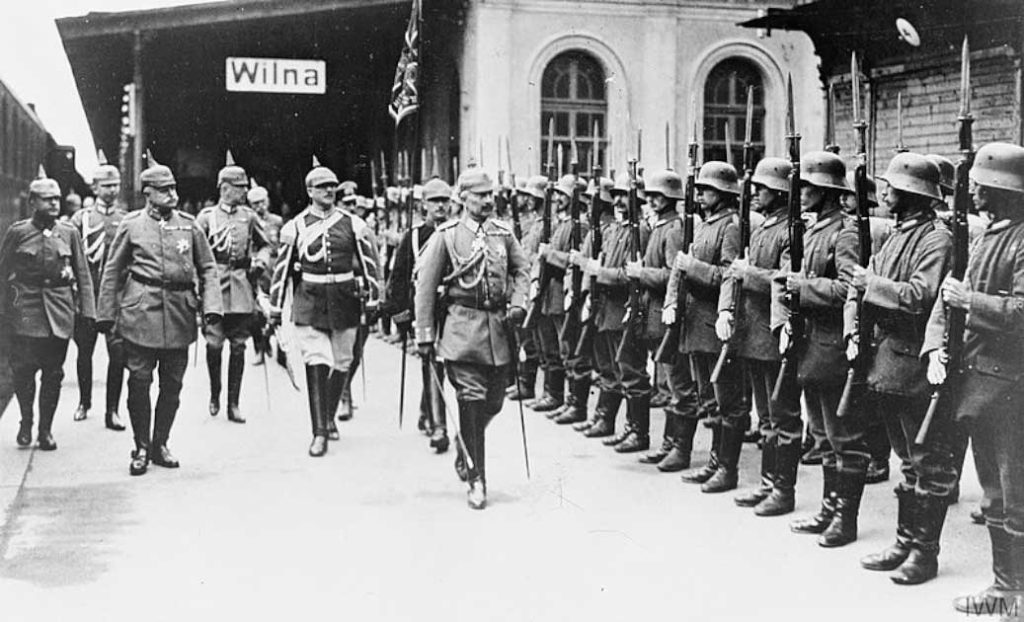World War I, or the “Great War,” was one of the first global conflicts that began in 1914 and ended in 1918. WWI is still considered to be one of the deadliest conflicts in history. Most of Europe was fighting along with the Russian Empire, the Ottoman Empire, and the United States.
The war spanned across Europe, the Pacific, Asia, Africa, and the Middle East. It is estimated that around 9 million soldiers died in combat, an additional 23 million soldiers were wounded, 5 million civilians died, and an unknown number of victims also perished in the many genocides in the Ottoman Empire and the 1918 influenza pandemic.
While the exact number of victims who died or were injured during WWI is unknown, everyone knows what started the war. The assassination of Archduke Franz Ferdinand was the event that led to the declaration of war.
This could have all been avoided if the car carrying the Archduke hadn’t made a wrong turn. A wrong turn fatefully crossed the paths of the Archduke of Austria-Hungary and a Bosnian Serb student who assassinated Franz Ferdinand and his wife, Sophie.
Looking back on that day, we can ask ourselves one question, did that wrong turn cause WWI? Would the war still happen if that wrong turn never happened?
The Visit To Bosnia
On June 28, 1914, Austrian Archduke Franz Ferdinand and his wife, Sophie Duchess of Hohenberg, traveled to Sarajevo. Franz Ferdinand was the heir presumptive (a person entitled to inherit a throne, but they could be demoted if an heir apparent is born) to the Austro-Hungarian throne and arrived in Bosnia’s capital city.
Franz Ferdinand was also the inspector general of the Austro-Hungarian military and traveled to Sarajevo to inspect/assess imperial troops stationed there. As the unelected ruler of his country and empire, he was a relic of the old Europe and perhaps did not appreciate how the world was changing.

The visit was problematic from the start. June 28th is St. Vitus’s Day, commemorating the 14th century when the Ottoman military defeated the medieval kingdom of Serbia during the 1389 Battle of Kosovo.
The national and religious holiday is a significant event for Serbian national identity. Franz Ferdinand’s visit on St. Vitus’ Day was seen as an insult to Serbian nationalists.
On that day Archduke Franz and his wife Sophie travelled in a Gräf & Stift open-topped touring car throughout the city of Sarajevo. Their official travel route was made public long before Franz Ferdinand arrived in Bosnia.
The reason why such an important military and political figure was not traveling in a military car was because the Austrian army had a restricted budget in 1914. The Archduke was able to use a private vehicle borrowed from Count Franz von Harrach of the Austrian army transport corps.
Even though the risk of terrorist attacks was thought to be incredibly high, minimal security actions were taken to protect the couple. 6 (or 7, the number varies) Bosnian Serb students who were said to have ties to the nationalist group known as the Black Hand saw the published motorcade route and spread themselves out through the route.
- Assassination of Olof Palme: Who Killed the Swedish Prime Minister?
- Crown Prince Rudolph And The Mayerling Incident: Suicide Or Murder?
The students’ goal that day was to either assassinate the Archduke himself, or otherwise commit an act of terrorism. They came prepared with bombs tied to their bodies, loaded pistols, and cyanide pills that would be used to commit suicide after Archduke Franz Ferdinand was injured or killed.
The drive through the streets of Sarajevo was doomed from the start.
First Attack and the Wrong Turn
The plan that day was to drive the motorcade along a major central street in the center of Sarajevo called Appel Quay. That morning, as the car headed down the street, everything was completely normal.
However the first attack was not long in coming. At around 10:15am, Nedeljko Čabrinović, a Bosnian Serb, threw a hand grenade (also described as a bomb in some sources) at the car transporting Archduke Franz Ferdinand and Sophie.

The driver was able to speed up and move away from the explosive, and after the device bounced off the back of the car, it hit the vehicle following behind. In that second car was General Oskar Potiorek, the governor of Bosnia. Several people, including the governor, were injured in the attack, but nobody died. The first attack can best be described as a mess and a failure.
Franz Ferdinand and his wife were headed to the city hall of Sarajevo to meet with the mayor and several other dignitaries. After giving a speech and dealing with some political business, he asked to visit General Oskar Potiorek, who was being treated in the hospital before Franz and Sophie left Sarajevo.
Due to the earlier terrorist attempt, the motorcade decided to change its route and would leave the city via Appel Quay. The original and previously published route had planned to turn onto Franz Joseph Street and drive through the narrow roads of the bazaar district.
Narrow lanes and many people shopping posed a significant security risk, and the route was changed. This was a sensible plan, but the issue was with how the change was communicated.
Archduke Franz Ferdinand and the other motorcade members spoke German while changing the plans. The problem was the drivers of both cars were Czech and did not speak German. The new plan was not translated into Czech, so the drivers did not know what was happening.
They assumed they would be following the original route. This led to the first car turning onto Franz Joseph Street, followed by the second car carrying Franz Ferdinand, his wife, and General Oskar Potiorek.
When Potiorek realized they had made a wrong turn, he began yelling at the driver, who slowed to a stop to listen to what the commotion was about. The car stopped in front of one of the Bosnian Serb students, Gavrilo Princip, who happened to be in the right place at the right time.
Princip fired two shots at point-blank range into the car, one bullet striking Sophie in her stomach and the other hitting Franz Ferdinand directly in his jugular vein. Princip was said to have tried to turn the gun on himself to commit suicide, but he was captured and arrested before he could finish his plan. During his sentencing, Princip was adamant that he did not intend to shoot Sophie but was hoping for Potiorek instead.
The Aftermath
All students planning to attack Franz Ferdinand were captured, and in some reports, 20 additional people were arrested in connection with the assassination plan. But capturing the protestors was not able to stop what came next.

In Sarajevo and several other locations in Austria-Hungary broke into anti-Serb riots (pogrom) in the hours after the assassination. It lasted until the military came in and restored order. The next day, anti-Serb protests and riots continued, and over 1,000 homes, shops, schools, and other places like hotels and banks owned by Serbs were destroyed or robbed.
At the time, Russia considered itself the protector of Serbia. It made public statements that essentially said, “Hey, Austria-Hungary, Serbia told you they were going to try to kill Franz Ferdinand, and you did nothing about it. That’s on you, not Serbia, and if you come for them, Mother Russia will come for you.”
- Tsar Nicholas II: Could the Romanovs have saved Imperial Russia?
- Saved, by St George! Who or What were the Angels of Mons?
Most people will say that the assassination of Franz Ferdinand started WWI because a month later, on July 28, 1914, war was officially declared. One of the most deadly wars in history was not caused by an assassination alone.
That was simply the straw that broke the camel’s back. Looking back to the years before WWI, you can see that war was imminent but when it would happen was unknown.
The annexation of Bosnia and Herzegovina in 1908 is an excellent place to start charting the path to WWI (though the Russian-Japanese War had also resulted in an increased Russia interest in the Balkans). The Austro-Hungarian government attempted some of the worst reverse psychology with the annexation.
They did govern Bosnia and Herzegovina, but the two countries were still considered part of the Ottoman Empire. The annexation was an attempt to release the two provinces, and Austria-Hungary expected them to choose then to join the Austro-Hungarian Empire, which didn’t happen.
Serbia wanted to absorb the two provinces into Serbia. The majority of people of Bosnia and Herzegovina, on the other hand, were Slavic and decided they wanted to form their own Slavic country, and Russia was all for this idea.

Following the annexation, in 1911, the Second Moroccan Crisis occurred. Germany, who had issues with France, wanted to do something to put pressure on the alliance between Britain and France. After some fighting, Germany was forced to recognize the French protectorate in Morocco.
This was pointless because all Kaiser Wilhelm II managed to do was strengthen the British-French alliance and drum up a public anger at perceived German militarism. Then came the Balkan Wars in 1912 and 1913.
During the first Balkan War, Greece, Montenegro, Serbia, and Bulgaria, who were free from the rule of the Ottoman Empire, formed a clique called the Balkan League. Russia fully backed the League, and the goal was to appropriate more of the territory that still belonged to the Turks in the Balkans and end the Ottoman Empire.
The Balkan League broke up, and Serbia, Greece, and Montenegro defeated the Ottoman army. This led to the Second Balkan War, where Bulgaria fought with Greece and Serbia over control of Macedonia and Romania.
The Ottoman Empire decided to join in and battle against Bulgaria, adding fuel to the fire. The Bulgarians lost, and the Balkan Wars left the region unstable, and tensions between Austria-Hungary and Serbia worsened. Germany decided to enter the fray as an ally of Austria-Hungary to discuss a war against the Serbs that needed to happen to strengthen the Austro-Hungarian Empire’s position.
Europe was a powderkeg, and the assassination of Franz Ferdinand caused by a wrong turn in 1914 pushed Austria-Hungary and Germany to declare war on the Serbs a month after Franz Ferdinand died. With all that conflict having occurred before Franz Ferdinand was assassinated, it is easy to see that war was going to happen at some point.
Would it have started in 1914 as it did? Who knows, the assassination was the last piece of the puzzle that formed WWI.
If the wrong turn onto Franz Joseph Street had never happened and Franz Ferdinand had been able to leave Sarajevo safely, would history have been any different?
Top Image: Princip only encountered Franz Ferdinand because the driver of the car made a mistake, and with two bullets started WW1. Source: Achille Beltrame / Public Domain.